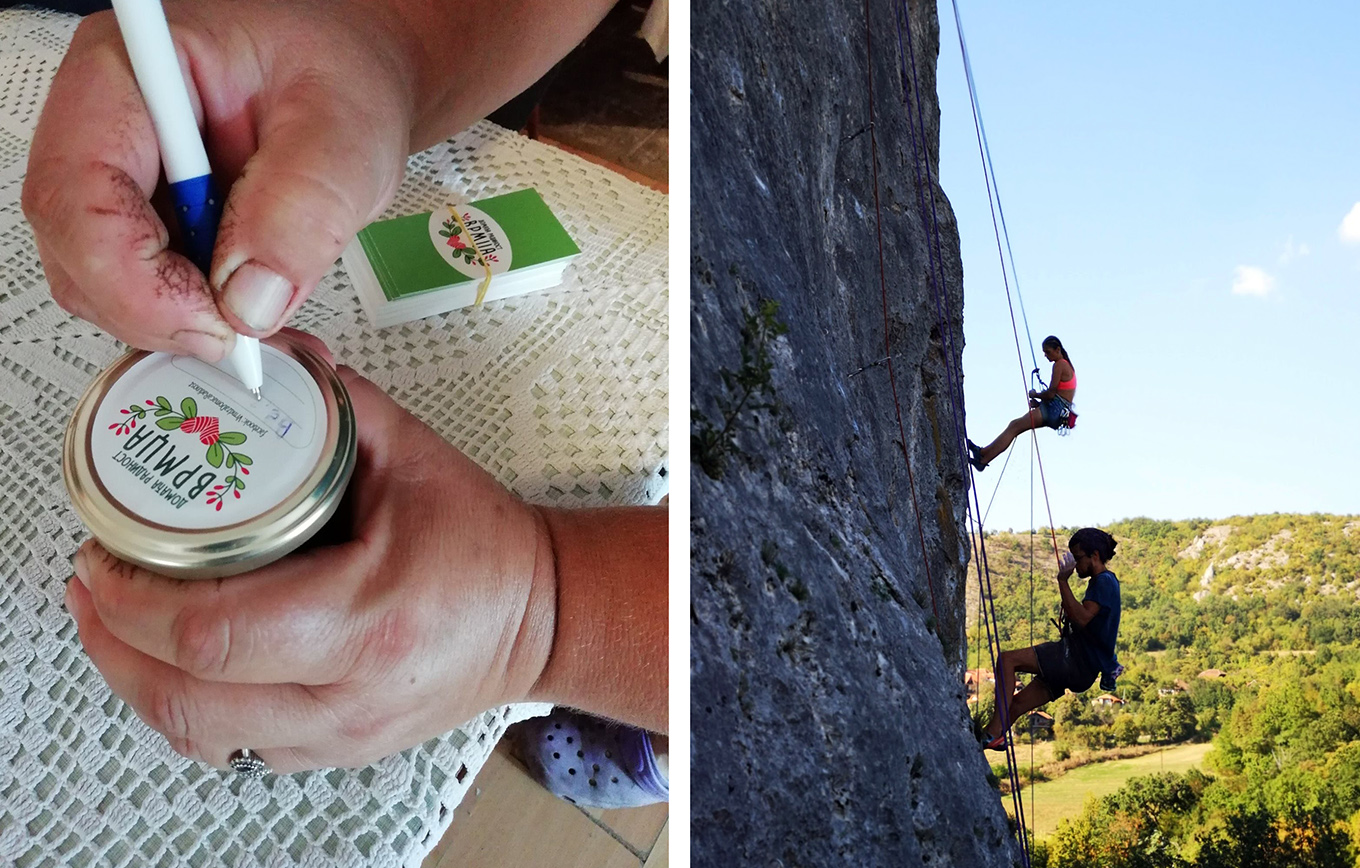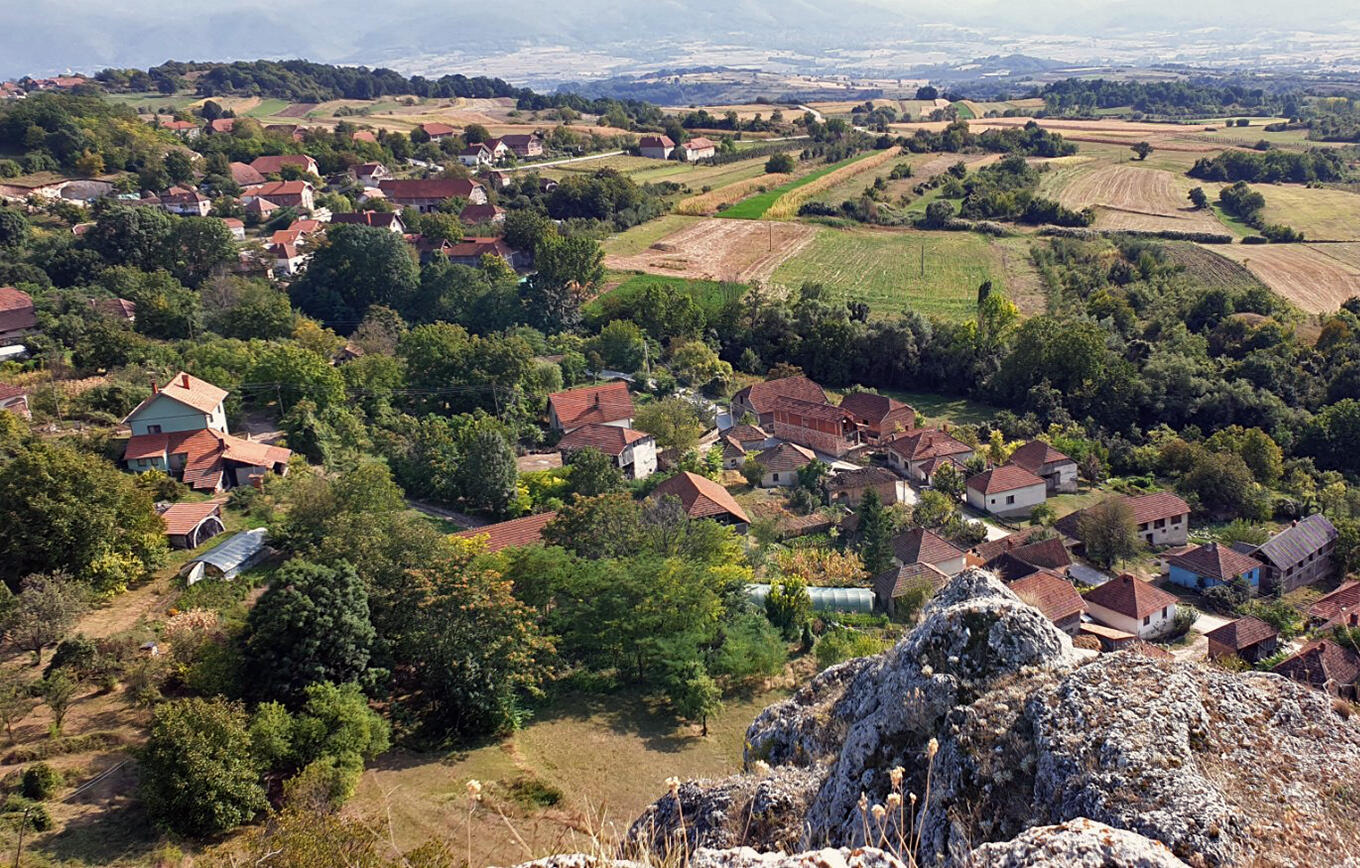VRMDZA, Serbia — Until a few years ago, there was nothing to distinguish Vrmdza from a thousand other dying Serbian villages. Though picturesque and historic, it had an ageing population and was at risk of emptying out.
Today, this village 230 km south-east of Belgrade is being reinvented: as a foodie paradise, a climbing heaven and an ideal location for remote working. Once-tumbling-down houses are being restored, and internet-savvy villagers are marketing their organic produce and ecotourism offers – even a “floating yoga” studio – on social media.
How did Vrmdza break the mould? And could its turnaround mark the end of the decline of the Serbian village and the beginning of something new?
When Dragana Tomic Pilipovic, 45, bought her property in Vrmdza in 2010, she was definitely ahead of the trend. The village’s population – which had numbered 1,593 people in 1948 – had dwindled to fewer than 500. But Tomic Pilipovic saw a different life for herself and her family in the village, whose natural beauty is dominated by the dramatic, craggy outcrop and cliffs of Latin grad.
Tomic Pilipovic loved her career as a head of human resources for large corporate firms in Belgrade, but at a certain point, she thought, “Enough is enough.” She wanted to have a family and started to wonder if it would be possible to live, as she says, “with less money, but with much more fulfilment?” In 2015, she and her husband and two small children moved permanently to Vrmdza, where Tomic Pilipovic set out to use her professional expertise to encourage sustainable development and social entrepreneurship in her new home.
The Rural Hub
After first founding an NGO, the Centre for Socially Responsible Entrepreneurship, that focuses on supporting women entrepreneurs, Tomic Pilipovic then set up a Rural Hub for Vrmdza, a space in her own home that is used for events, discussions, mentorship and study tours. Its mission, she says, is “actively connecting rural and urban knowledge” in a sustainable way.

The Hub coordinates mentorship networks linking professional women in Serbia with women in Vrmdza and elsewhere. At the Hub, new local brands have been created to market produce and develop local tourism. Villagers attend seminars on financial management and learn how to promote their products online. Essential to the Hub’s ethos is that everyone has something to teach, and to learn: Newcomers to Vrmdza have learned from its original residents about how to adapt to rural life, while bringing in fresh ideas and knowledge that have helped create new opportunities and jobs in the village.
It helps that Vrmdza has an engaging story to tell visitors: the Romans, Byzantines and Ottomans all made their marks on the village. Its church may date back as far as the 13th century. Its school is the oldest in the area, having opened its doors in 1851. Nearby is Rtanj, a mountain believed by some to be a centre of alien activity; more prosaically, the tea grown there is thought to be an aphrodisiac and to help with respiratory problems.
When Tomic Pilipovic first bought her property in Vrmdza, she came with a group of like-minded friends who also wanted to live there at least part of the year, if not permanently. She says that the locals were at first suspicious of the newcomers who unexpectedly began showing up from Belgrade, Nis and Zrenjanin – and even a few from abroad. “They thought there must be something wrong with someone who wanted to come from Belgrade to the poorest area of Serbia!” she recalls.

A model of rural development
Things have definitely changed since then. Vrmdza’s population may not yet be growing but anecdotal evidence suggests that it has at least stopped shrinking, which is more than can be said for most Serbian villages.
Since 2010 some 45 properties out of a total of about 155 have been bought by newcomers. Up to 30 “new” people live in the village year-round, while the rest come and go. But since the advent of Covid-19, many more have either moved to Vrmdza permanently or are spending extended amounts of time there. A few villagers who had moved abroad have also returned in recent years.
In 2015 Tomic Pilipovic wrote a book about Vrmdza as a “model of rural development and economic empowerment” for Serbian villages, an example of the global trend of “ecovillages,” described as “a type of settlement whose inhabitants want to live in harmony with nature.” Though nature is still essential to Vrmdza’s appeal, technological improvements – fast broadband expansion, online shopping and better infrastructure in general – are making a rural revival far more of a possibility than it would have been only a few years ago.
A climbing destination
One of the people who relocated to Vrmdza in 2020 is Silvana Hadzic, an IT recruitment consultant with her own business. Her husband works for a large American firm with an office in Belgrade. When Covid-19 hit he was told to work remotely, allowing them to make the move to Vrmdza. “That is the trend,” Hadzic says. “Lots of people are buying houses all over Serbia.”

When Hadzic first visited Vrmdza some years previously, she realized it would be the perfect place to pursue her passion for rock-climbing. “I saw climbing places everywhere, a huge number of routes…. I was like, ‘Wow!’” she recalls.
But it took her a long time to convince other climbers to come see for themselves. Eventually she was able to persuade her climbing mentor from the Sports Faculty of Nis University to visit Vrmdza. He was impressed too, and immediately began working on local climbing routes – which today number over 100, with more in the works. Hadzic aims to make Vrmdza the best climbing destination in Serbia, with the most routes.
For the last three years, a climbing festival has been held in Vrmdza; in 2020 it played host to a national climbing competition featuring Serbia’s top climbers. They are now a significant proportion of the estimated 8,000 visitors who came to the village in the last year, many of whom stayed locally, ate locally and bought locally produced food and handicrafts to take home.
Turning the tide
What has turned the tide of decline for Vrmdza was a confluence of interests between the newcomers and the original residents, who understood how to adapt to seize the new opportunities that were being presented. A key role in this was played by Slavisa Krstic, the former president of the mesna zajednica (local council). According to Hadzic, Krstic not only had vision himself but “knew how to promote the village” based at first on what the newcomers were doing.
“If we hadn’t come, he could not have built the story, so it’s synergy,” she says.

Krstic told the BBC in a 2020 interview that as far back as 2006 he had proposed a new development concept for Vrmdza. The idea was to create better conditions that would attract new residents, who would then promote the village as a place for healthy living, thus putting it on the map for visitors. In the past tourists only came to the region to visit Sokobanja, a nearby spa town, but now its offerings have expanded exponentially as new hotels and restaurants open.
What locals discovered during this process, says Tomic Pilipovic, is that visitors were not just prepared to come to Vrmdza, but also to pay for what people were already producing as part of village life. “For the women here, it was normal to make lunch for 10, 15 or 20 people who are building or working in the field,” she says. Realizing that ability could translate into feeding groups of visitors, for example, was “the crucial moment” in sparking change. Once Vrmdza’s women saw how they could benefit from the new visitors, Tomic Pilipovic says, the rest of their families followed, overcoming their traditional resistance to change.
Despite its small size, the example of Vrmdza shows that rural decline is not inevitable, and that the Covid-19 pandemic can provide some unexpected opportunities to accelerate change.
“We have shown that, far from being dull, it can be interesting and innovative to live in a village,” says Tomic Pilipovic. Because of the recent changes, local young people – and those born abroad with roots in Vrmdza – have begun to become much more interested in living and working in the village.
“I am very happy about this,” says Tomic Pilipovic. “This is really what I think the 21st century can bring to us – that we can really make a combination of urban and rural sustainable.”


